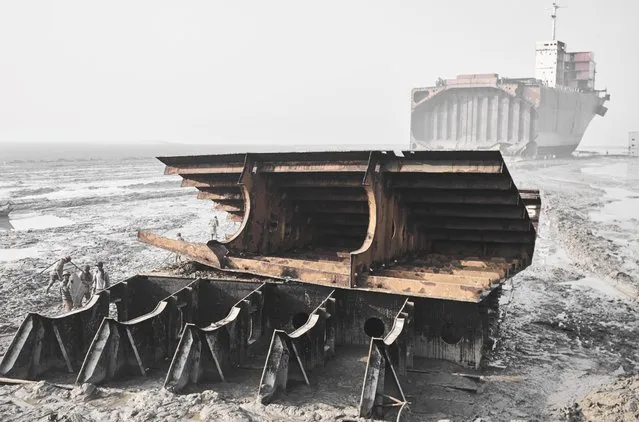
Between 300 and 500 workers can spend up to four months dismantling a single ship in Sitakunda Beach, Bangladesh, February 2012. A look inside Bangladesh’s ship breaking yards reveal the brutal conditions workers are subjected to everyday. The taskforce work 12-14 hours a day of manual labour for approximately $1.9 in pay. The ship breaking industry began in the 1960s and 70s after a ship washed up on Sitakunda beach and was later sold for scrap, now Bangladesh is one of the world’s leaders in ship breaking. After living in Dhaka, Bangladesh for five years, photographer Jan Møller Hansen flew to the port city of Chittagong to document the ship breaking industry. (Photo by Jan Møller Hansen/Barcroft Images)
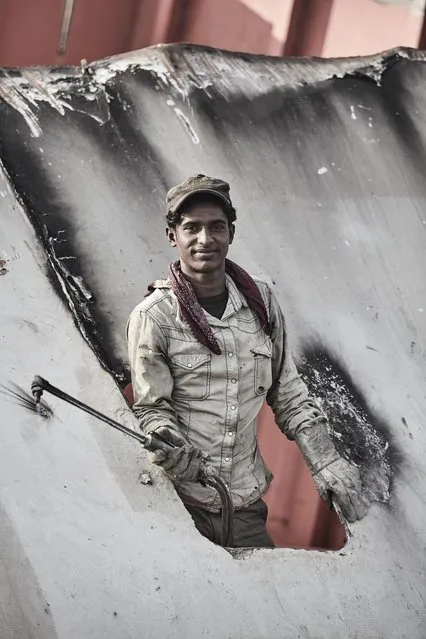
Approximately 90% of each ship is recycled including machinery and even toilet roll in Sitakunda Beach, Bangladesh, February 2012. (Photo by Jan Møller Hansen/Barcroft Images)
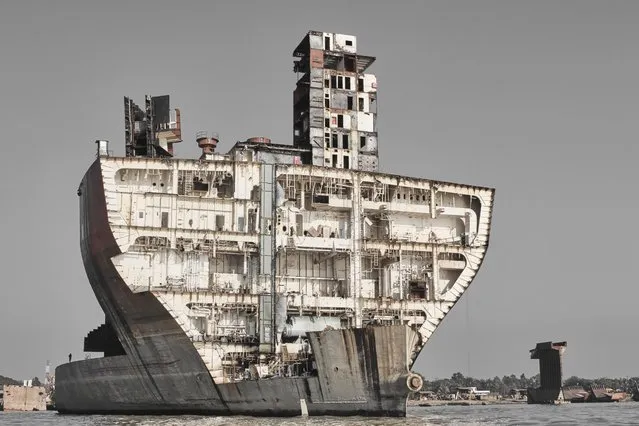
Half of a ship waits to be recycled after workers gutted the vessel in Sitakunda Beach, Bangladesh, February 2012. (Photo by Jan Møller Hansen/Barcroft Images)
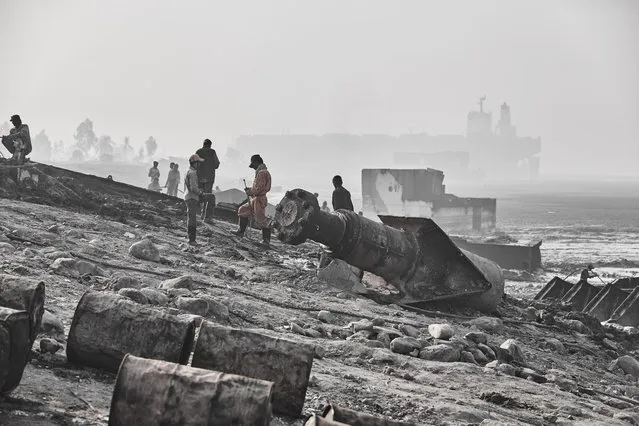
Approximately 90% of each ship is recycled including machinery and even toilet roll in Sitakunda Beach, Bangladesh, February 2012. (Photo by Jan Møller Hansen/Barcroft Images)
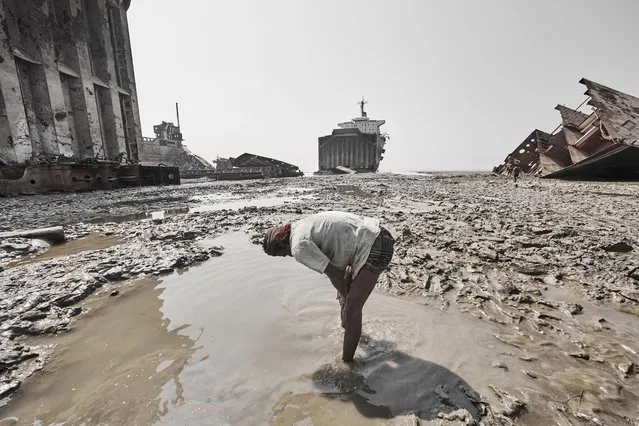
A ship breaking workertakes a breather amongst the water logged sandy beach in Sitakunda Beach, Bangladesh, February 2012. (Photo by Jan Møller Hansen/Barcroft Images)
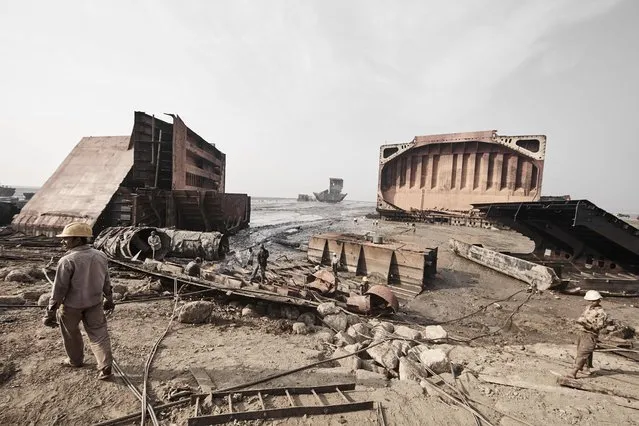
Ship breaking has become a lucrative and over 100 shipyards are on the beach in Sitakunda Beach, Bangladesh, February 2012. (Photo by Jan Møller Hansen/Barcroft Images)

Anything not recycled in industry is sold on stalls along the neighbouring highway in Sitakunda Beach, Bangladesh, February 2012. (Photo by Jan Møller Hansen/Barcroft Images)
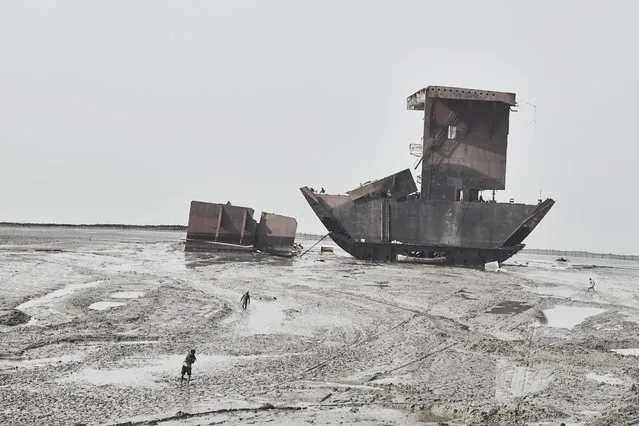
Workers earn about two and four dollars per day of work in Sitakunda Beach, Bangladesh, February 2012. (Photo by Jan Møller Hansen/Barcroft Images)
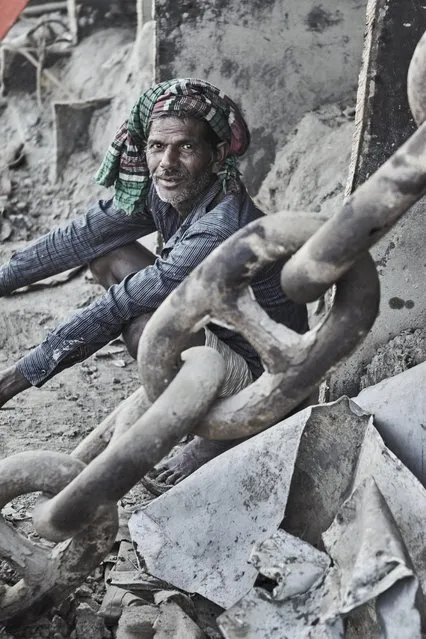
A ship breaking worker poses for a portrait during one of his long 12-14 hour shifts in Sitakunda Beach, Bangladesh, February 2012. (Photo by Jan Møller Hansen/Barcroft Images)
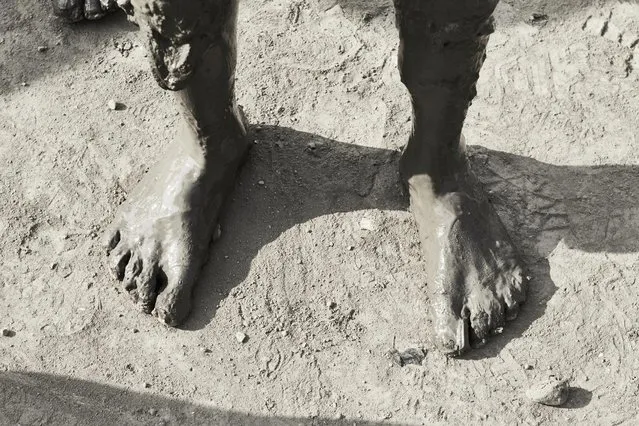
Conditions are dangerous for ship breakers and death and permanent injury are not uncommon in Sitakunda Beach, Bangladesh, February 2012. (Photo by Jan Møller Hansen/Barcroft Images)
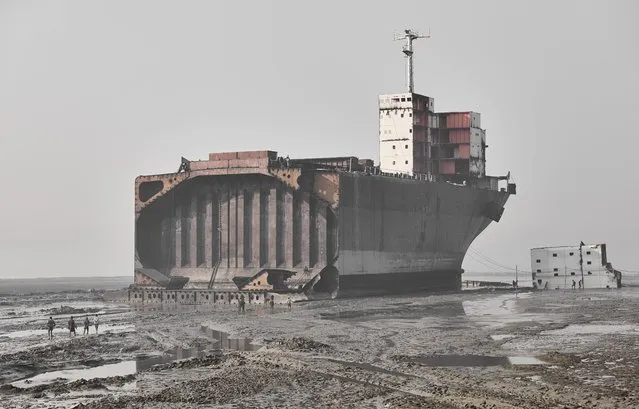
Anything not recycled in industry is sold on stalls along the neighbouring highway in Sitakunda Beach, Bangladesh, February 2012. (Photo by Jan Møller Hansen/Barcroft Images)
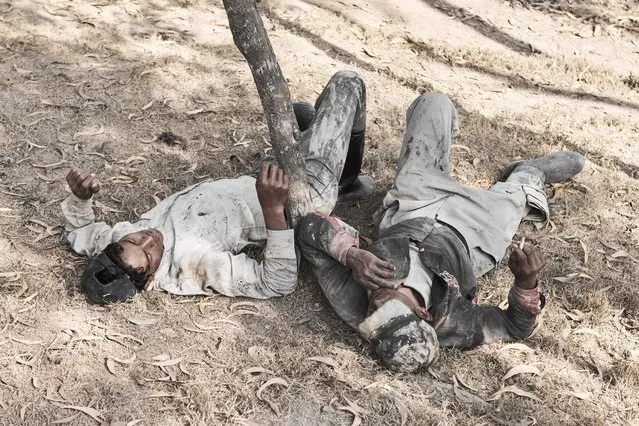
Conditions are dangerous for ship breakers and death and permanent injury are not uncommon in Sitakunda Beach, Bangladesh, February 2012. (Photo by Jan Møller Hansen/Barcroft Images)
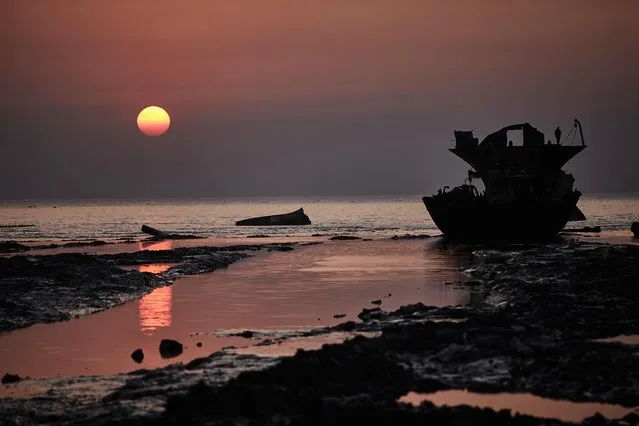
Ship breaking has become a lucrative and over 100 shipyards are on the beach in Sitakunda Beach, Bangladesh, February 2012. (Photo by Jan Møller Hansen/Barcroft Images)
27 Jan 2017 12:25:00,
post received
0 comments
